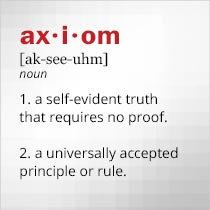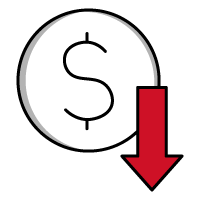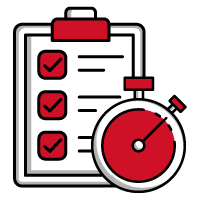Make Safer Products with Practical EMC Testing
April 02, 2021
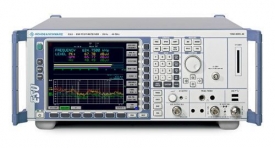 |
Electronic circuits and products are being made smaller as users seek more mobility and portability. Whether those users are consumers, warehouse workers, or military teams, electronic devices such as cell phones and even medical alert devices are being designed to fit in smaller packages. Making smaller electronic products possible is made possible by achieving electromagnetic compatibility (EMC) within the operating environment—making measurements that tell whether an electronic design can operate effectively when near other electronic devices and not cause electromagnetic interference (EMI) for other electronic devices. Fortunately, a variety of practical test equipment has been developed to perform the many measurements needed for efficient EMC/EMI testing.
Different EMC and EMI regulations around the world set limits on acceptable amounts of EM radiation from an electronic device, to prevent interference from the device, but to also ensure the reliability and safety of the device. In the final stages of an electronic product’s development, designers may rely on an accredited test lab that provides specialized test services to ensure that a product meets applicable EMC/EMI regulations. This type of test lab has the equipment and experience to perform all the EMC/EMI measurements according to different standards, such as the U.S. military MIL-STD-461E/F requirements and EMC standards set by international organizations such as the Comité International Special des Perturbations Radioelectriques (CISPR) and the International Organization for Standardization (ISO).
Prior to full EMC compliance testing, EMC/EMI pre-compliance testing should be ongoing during the design and development of a new electronic product. Such testing ensures that a new electronic product will operate in a realistic EM environment and not add its own noise to the environment. It can also be used to test the behavior of a new product when subjected to RF power surges caused by lightning storms or industrial machinery, such as welding machines. Pulsed test signals can provide the high-energy spikes needed to emulate such operating conditions.
EMC/EMI pre-compliance testing can help find any “trouble spots” in a design, such as “leaky” interconnections that radiate or printed-circuit-board (PCB) transmission lines acting as antennas. EMC/EMI pre-compliance testing can show where design modifications are needed, such as the addition of EMI shielding to a PCB that can improve the chance of a final design passing full EMC/EMI compliance testing. As with full EMC/EMI compliance testing, EMC/EMI pre-compliance testing requires specialized test equipment that can meet the requirements for applicable EMC/EMI standards for a device under test (DUT) or equipment under test (EUT).
EMC/EMI compliance and pre-compliance testing involves four different types of measurements: radiated immunity, radiated emissions, conducted immunity, and conducted emissions. The tests check for high levels of EM emissions radiating from a device under test (DUT) and the DUT’s own immunity to radiated EM energy in the operating environment, such as from wireless cellular networks and television broadcast stations. For example, a “smart watch” with a wireless medical alert function must operate effectively even when surrounded by signals from radio and television broadcast stations and cellular networks. RF or EM emissions can be radiated by electronic circuits and devices acting as antennas and radio waves propagating into free space. Since excessive levels of EM energy is also conducted along transmission lines such as coaxial cables or signal and power lines in a PCB, conducted emissions tests check to make sure transmission lines in a DUT are not acting like antennas and radiating excessive levels of EM energy while conducted immunity tests investigate how well a DUT’s transmission lines can reject EMI from other electronic devices.
Complying with Test Needs
A full EMC/EMI compliance test lab, with suitable signal generators to mimic EMI levels and accurate signal analyzers to detect and identify radiated and conducted emissions, can represent a sizeable capital investment, especially when it includes an anechoic chamber to shield a DUT from outside sources of EMI when checking for the DUT’s radiated and conducted emissions. But EMC/EMI pre-compliance testing can be performed within a reasonable budget, with a wideband signal analyzer, test signal source, power amplifier to boost radiated test levels according to the requirements of the applicable EMC/EMI standard, and test antennas and near-field probes.
An example of the analyzer is the Keysight/Agilent 8593EM. It covers a wide frequency range, from 9 kHz to 22 GHz, and can be used as an EMC/EMI pre-compliance analyzer or a spectrum analyzer, switching between operating modes with the push of a button. It has built-in amplitude correction to automatically compensate for changes in signal amplitude due to amplifier gain and cable loss in a test setup. The versatile analyzer can work with predefined EMC test requirements such as CISPR standards and predefined test routines to automatically measure all signal levels over a specified frequency range. It can measure and save as many as 239 detected signals automatically.
The analyzer is well suited for radiated and conducted emissions testing and can be part of EMC radiated and conducted immunity testing when teamed with a test signal source. The Solar 9354-1 transient generator, for example, provides various test waveforms including six damped sinusoidal pulses from 10 kHz to 100 MHz for radiated and conducted EMC immunity testing according to MIL-STD-461E/F. Pulse repetition rates can be adjusted over a wide range for manual triggering or automatic operation.
Another example of an EMC/EMI test source for EMC immunity or susceptibility testing is the Emtest NX5 multifunction test generator. It can generate transients with energy levels as high as 5.5 kV for power fail testing. A 7-in. color touch screen (Fig. 2) makes the test generator easy to use while several coupling modes for its output ports provide flexibility for AC and DC testing. It also provides AC and DC supply voltages for a DUT or EUT.
One of the more impressive measurement tools for EMC/EMI pre-compliance testing is the Rohde & Schwarz ESU8 EMI test receiver. The rack-mount equipment is basically a system in a box, containing an 8-GHz receiver with an oven-controlled crystal oscillator (OCXO) frequency reference, 13 preselection filters, and a preamplifier with nominal gain of 20 dB from 1 kHz to 3.6 GHz. The test receiver is capable of scanning as many as 10 subranges of its full bandwidth, with scanning speeds from 10 μs to 100 s. Preselection filters including fixed lowpass, highpass, and bandpass filters and tracking bandpass filters with bandwidths from 230 kHz to 100 MHz can be tuned across the receiver’s measurement range to help isolate signals of interest.
The R&S ESU8 features a large (8.4-in.) display screen and measurement capability for pulsed and continuous-wave signals to 8 GHz. It has a DC coupled frequency range of DC to 8 GHz and an AC-coupled span of 1 MHz to 8 GHz, both with 0.01-Hz frequency resolution. It provides a second input port, useful for measuring clock or reference oscillators of EUT, with DC coupled range of DC to 1 GHz and AC-coupled range of 9 kHz to 1 GHz, also with 0.01-Hz resolution. The sensitive receiver has displayed average noise level of typically -151 dBm or better from 20 MHz to 8 GHz enabling it to track extremely low-level signals when paired with appropriate test probes or antennas. As many as 500 instrument settings and/or signal traces can be saved in internal memory.
These different equipment are good starting points for an EMC/EMI pre-compliance test setup, which are required measurement antennas and probes, such as the ETS Lindgren 7405. The collection includes three loop probes, one stub probe, and one ball probe, each with BNC coaxial connectors. An optional preamplifier provides additional gain to the probes from 100 kHz to 3 GHz. To find out more about these instruments and field probes and additional test gear for practical EMC/EMI pre-compliance test solutions, for sale or for rent, visit the Axiom Test Equipment (www.axiomtest.com) website.
Back to BLOG


